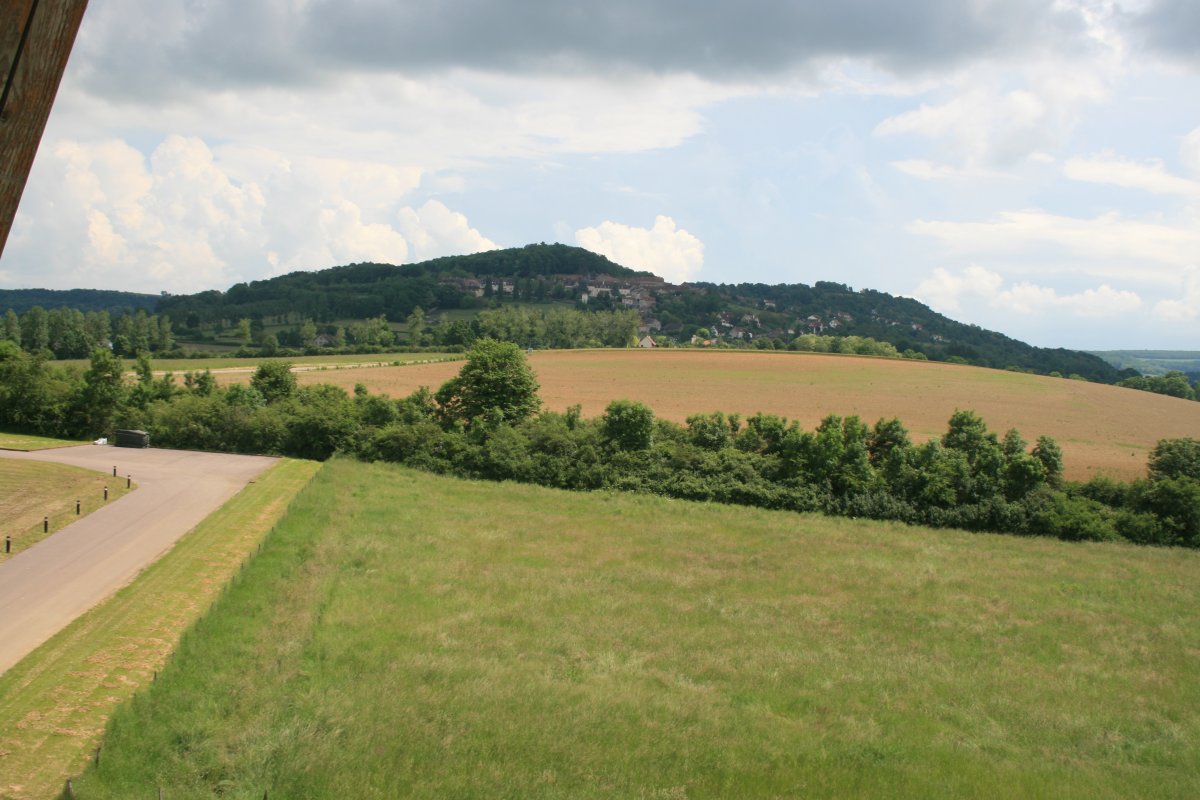France, June 2016 - Roman-Gaul Battle at Alesia
After two nights in Beaune, we backtracked northwest up highway A-6. Our first stop would be to visit the Alesia battlefield, where Julius Caesar defeated the Gauls in 52 B.C.
We had a little trouble finding it; at one point the GPS had us going down this country road!
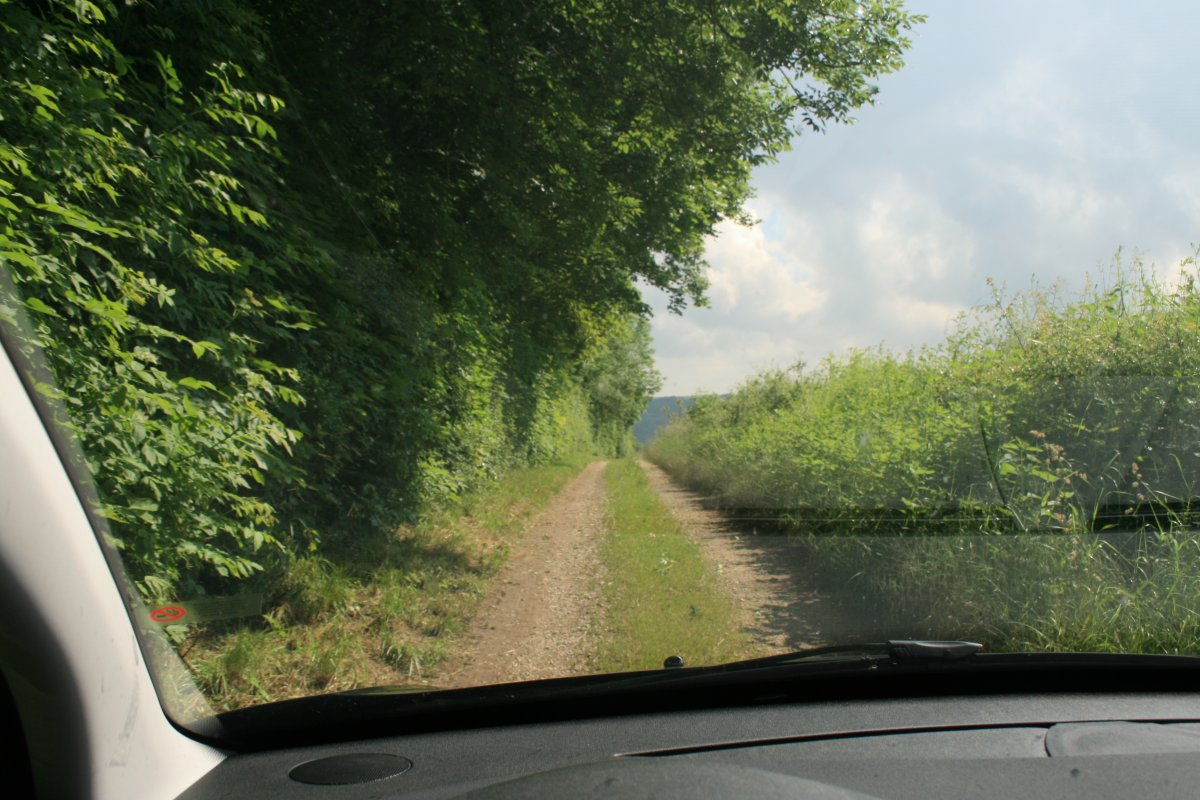
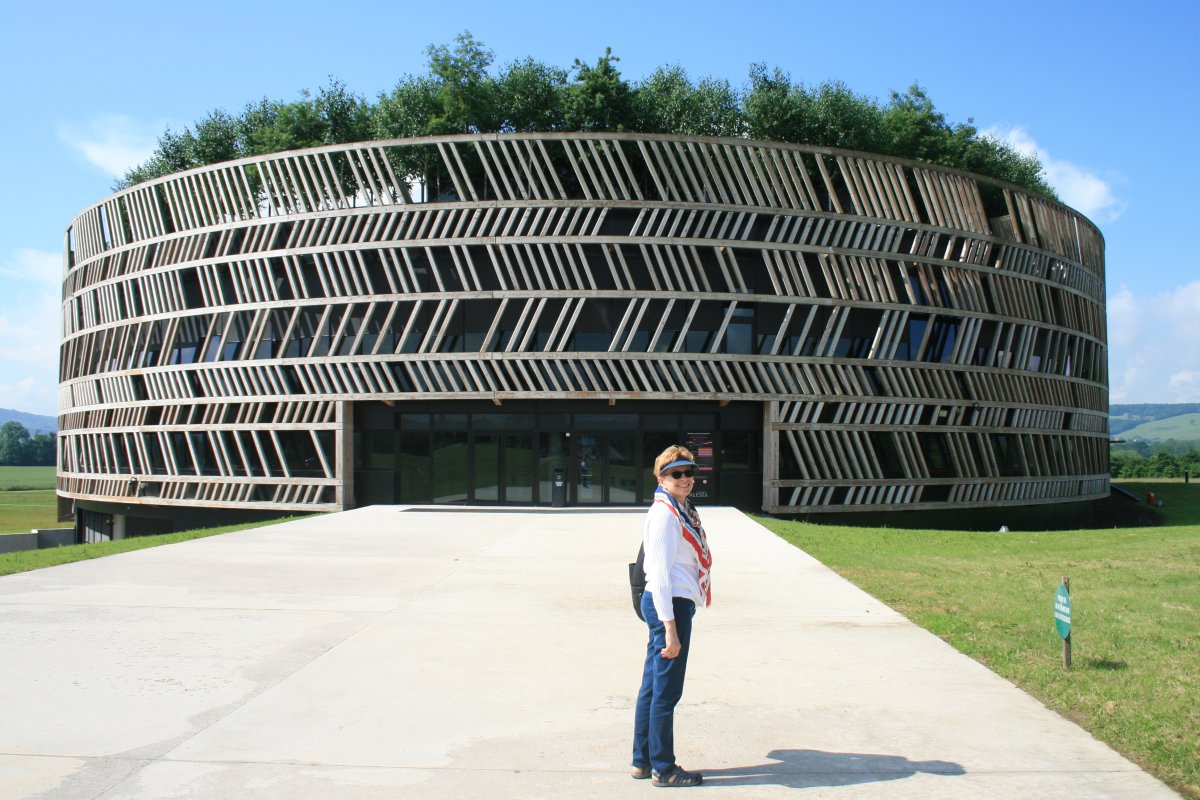
Caesar had his legions build an inner and outer wall around Alesia -- a circumference of roughly 11 miles. Think about it; that's a lot of digging. The museum included a full-scale reconstruction of a section of the Roman wall out back.
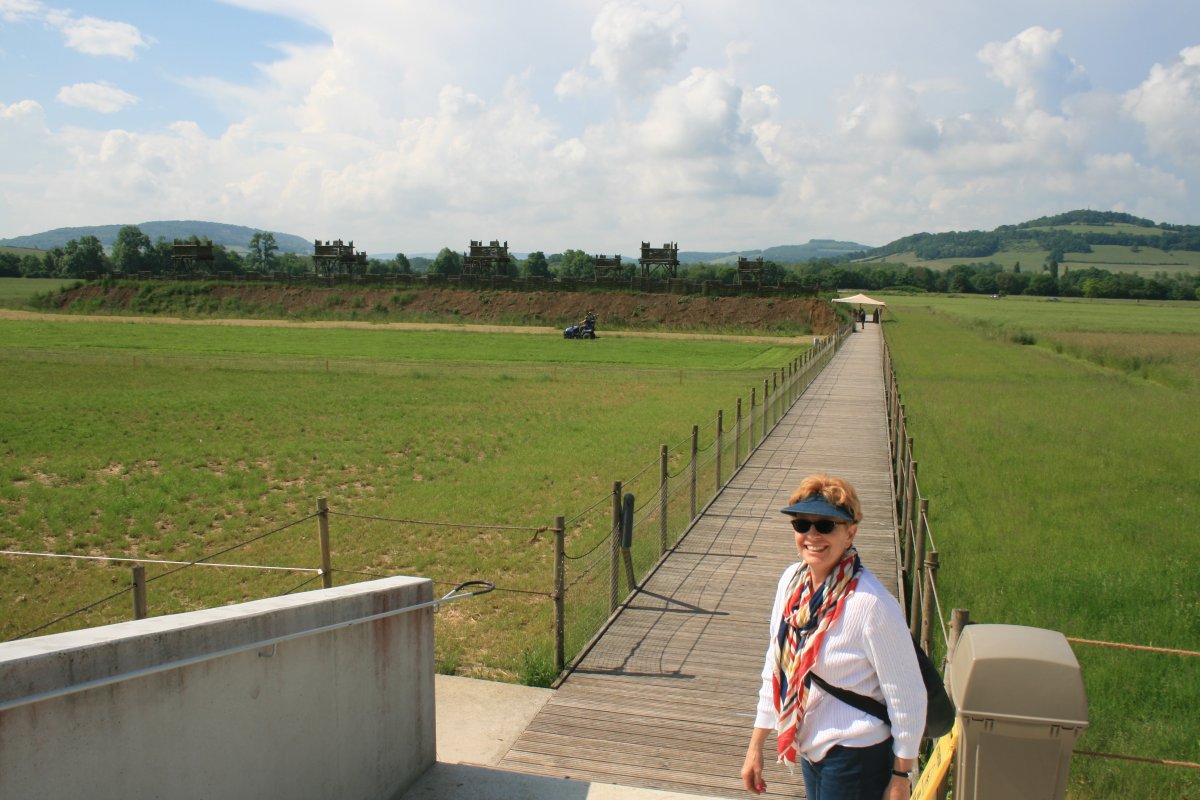
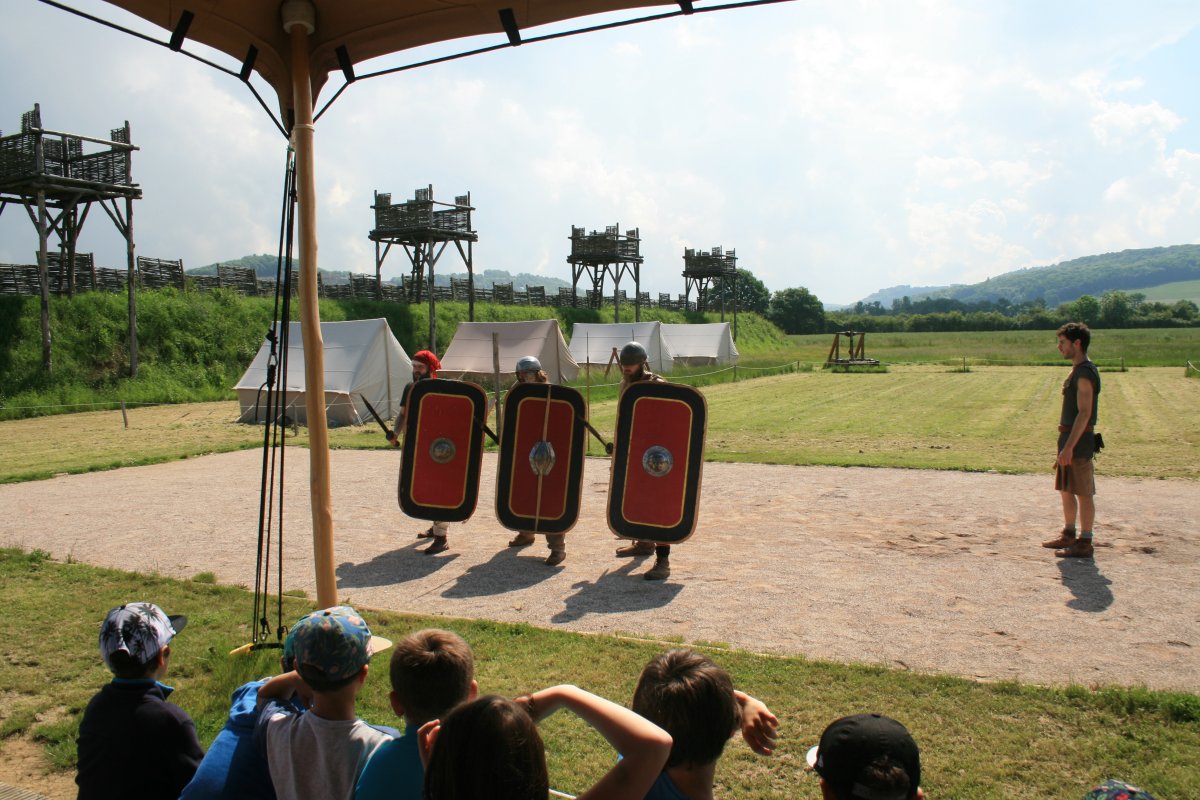
From the museum I learned the Romans and Gaul soldiers were similarly equipped as far as weapons and armour. The real difference was leadership. Caesar was the absolute commander of the Romans, whereas the Gallic leader Vercingetorix had to deal with the numerous tribal leaders that made up his forces.

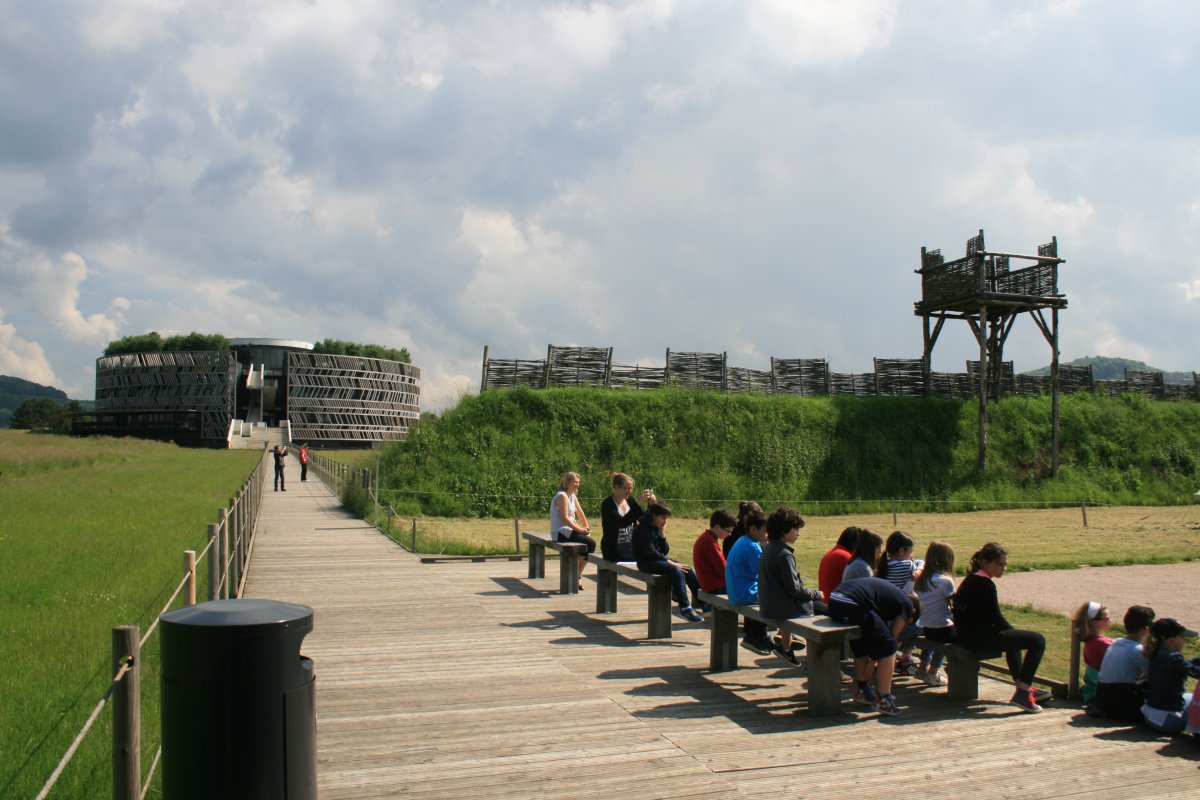
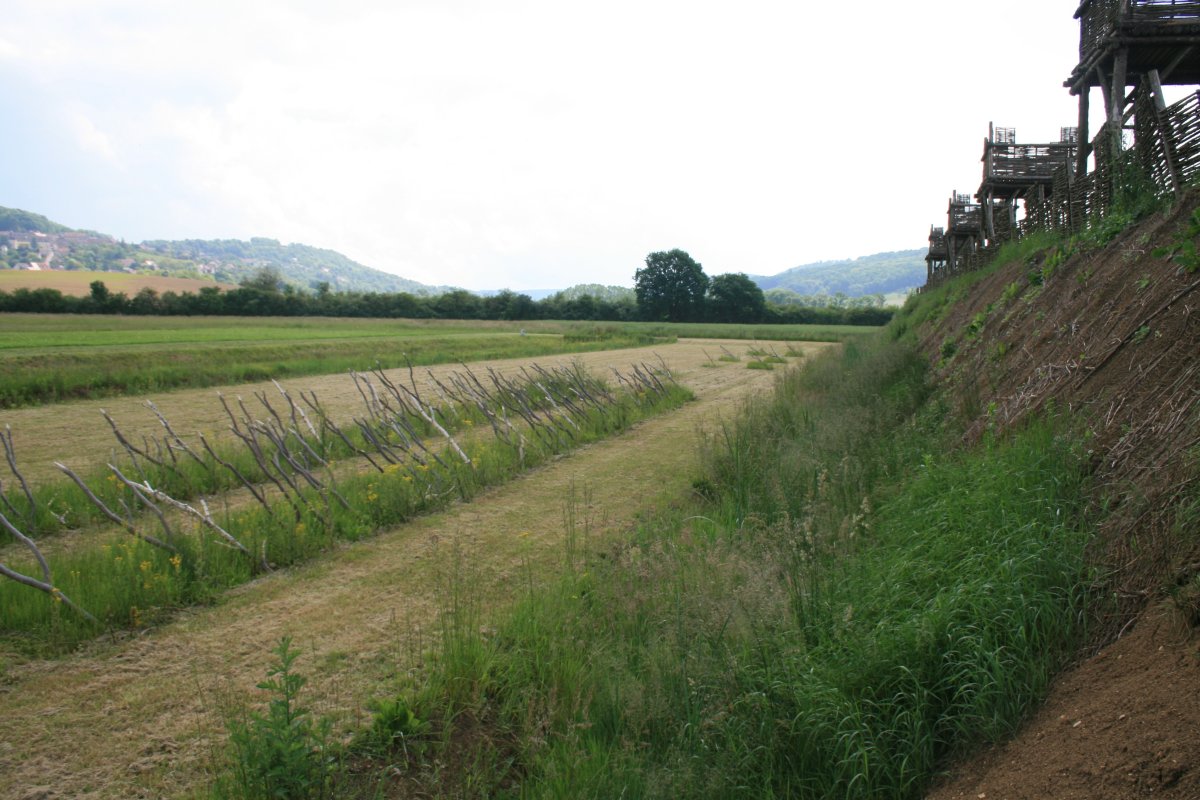
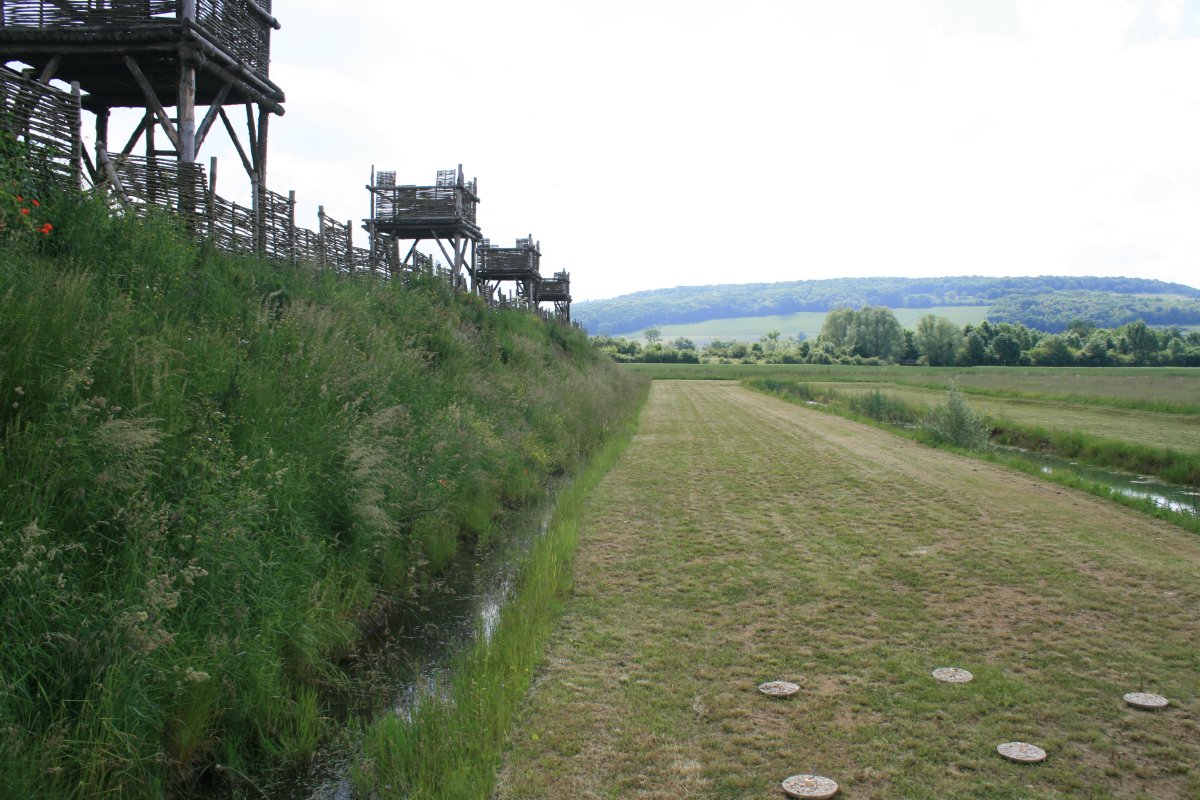
The small village of Alise Ste-Reine is on that hill in the distance and was where the Gaul stronghold was.
Alesia marked the end of Gallic culture; Roman rule was established in modern day France for the next 500 years.
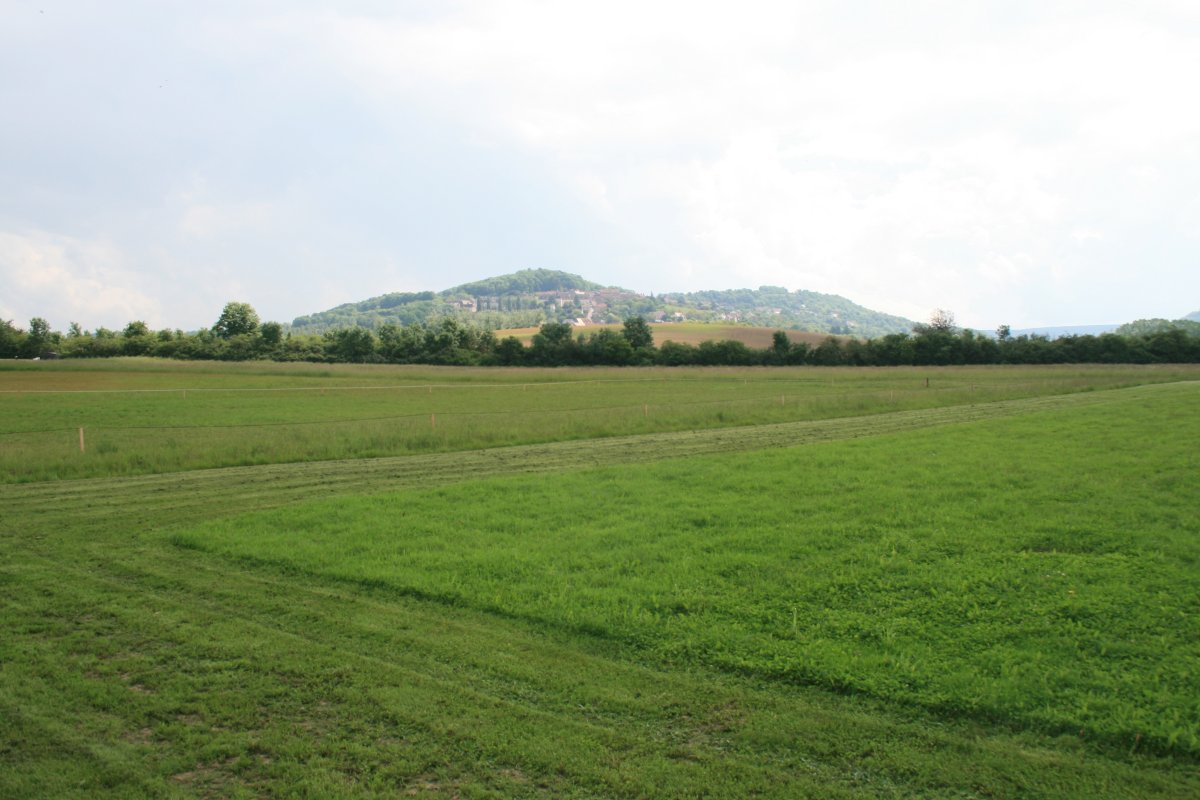
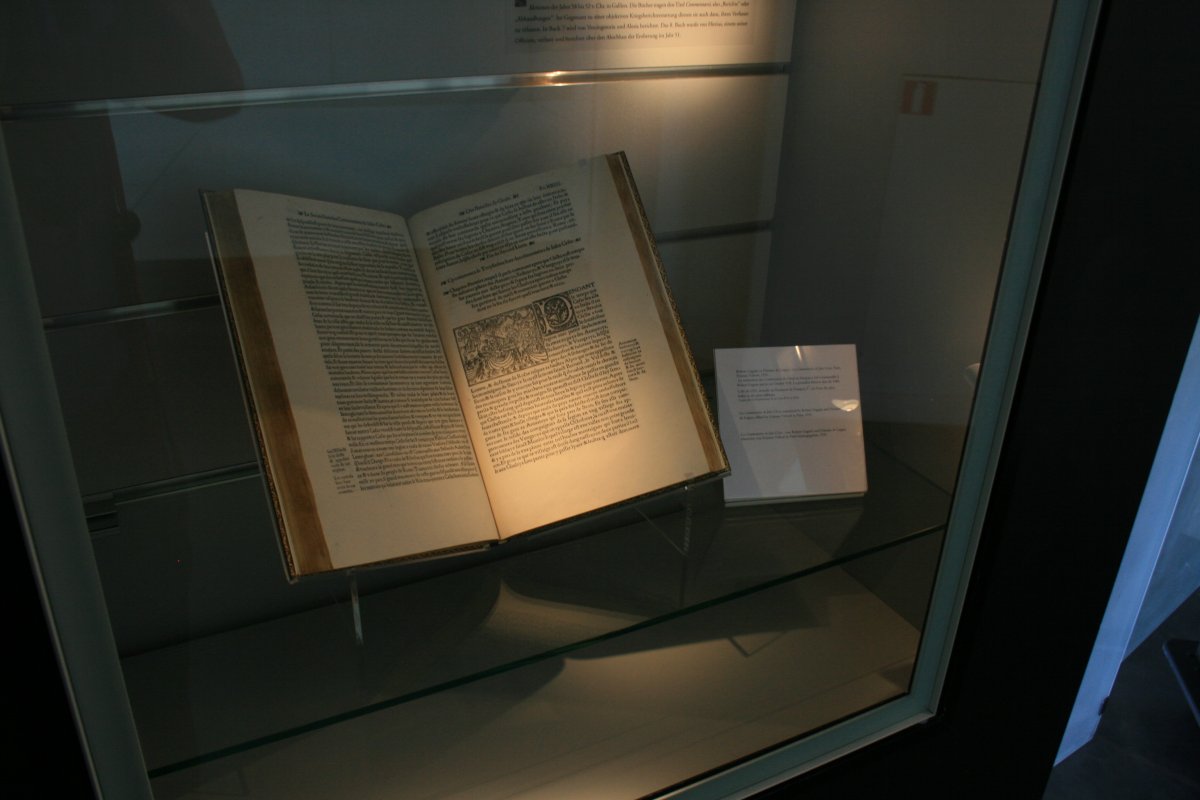
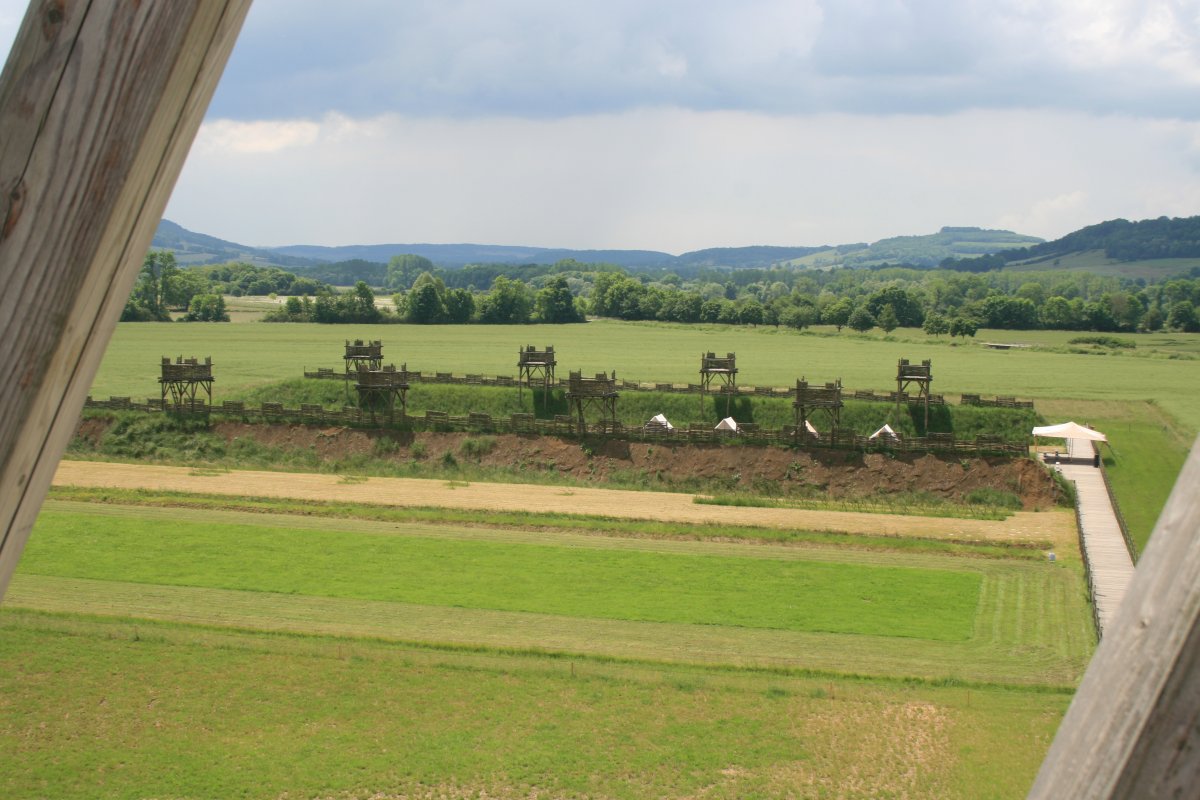
A better look at the hilltop village.
The site of the battle was lost to history for centuries. It was Napoleon III, of all people, who sponsored archeological research in the 1860s that led to finding the site which led to
Alise Ste-Reine. Excavations in the 1990's further validated the site further.
I really enjoyed touring the excellent museum -- they have really done a nice job with it -- and seeing the battlefield area.
